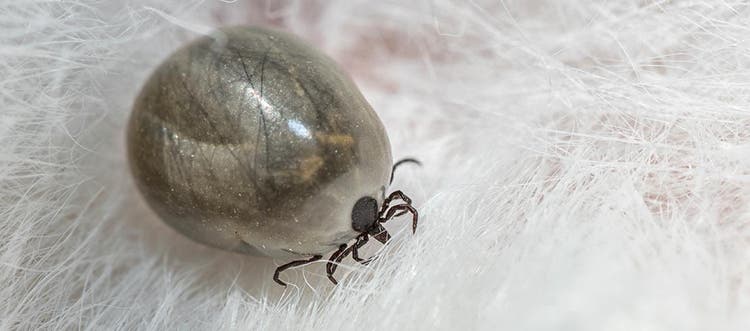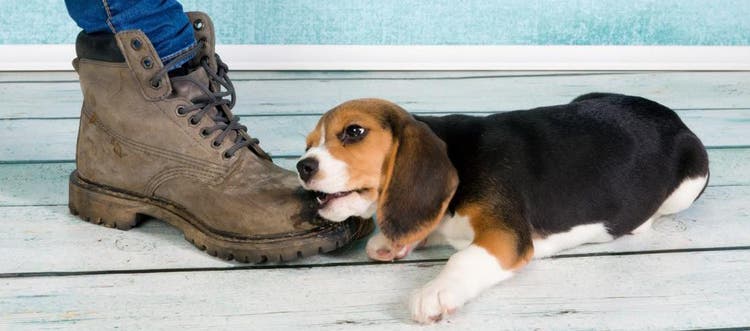Training a puppy can be a big job, but taking the proper steps to housetrain, leash-train and socialize your puppy can help set up you and your new pet for success. Use this guide to puppy training to help you create the good habits your puppy needs to grow into a great dog.
Getting a new puppy is an exciting time for everyone, including the puppy. Once separated from their dog family, however, your new pup will be looking to you for guidance. It’s up to you to be the leader for your new puppy and properly show them how to succeed with everyone and everything in your world.
Here are some important tips on how to train your puppy right, right from the start.
Start puppy training early
Housetraining, obedience and socialization – all are important skills that every dog needs, and the sooner you start teaching them, the better. Teaching these skills requires consistency, patience and positive reinforcement. Your goal is to forge good habits and build a bond with your pet.
Housetraining your puppy
Housetraining should be the first lesson you work on with your new puppy. You can introduce your puppy to the basics of housetraining from as early as eight weeks, although do not expect or demand immediate success. It typically takes four to six months for a dog to be completely housetrained and accidents are common for up to twelve months, so be patient with your pup.
Housetraining: Daytime vs. nighttime
It may help to think of day and nighttime housetraining separately.
In the daytime, an eight-week-old puppy will probably need to urinate at least every two hours and to defecate shortly after any meal. As a rule of thumb, a puppy can usually hold it for up to one hour per month of their age plus one. For example, a three-month-old puppy can usually hold it for up to 4 hours. However, other stimulation like playtime and getting excited can cause them to need to go before then. Take them outside frequently during the day and try to get them on a schedule and encourage housetraining.
A sample housetraining schedule might look like this:
- First thing in the morning
- After each meal
- After your puppy drinks more than a few sips of water
- Once every hour
- Once before bed
Keep your puppy’s toilet area free of toys and distractions. Do not play with your puppy until they have gone – after which you can praise them. Remember: dog feces are a common source of parasites and diseases. Every time your puppy makes a stool you should pick up the waste with a disposable bag and throw it in your garbage bin, then wash your hands thoroughly.
If your puppy doesn’t go when you take them out, take them back to their bed area (crate) as animals do not like to soil their beds, and then try again a few minutes later. Handy hint: give a low and prolonged whistle or consistent command whenever your puppy urinates. Soon they will associate this with a command and, bingo, you’ll have trained your puppy to urinate to your cue. Training your pup to urinate on command can be very helpful before bedtime or before travelling in a car.
The goal is to avoid accidents as much as possible, even at such a young age. As your puppy gets older, they will need to go less frequently during the day.
A puppy can typically last longer without a bathroom break during the nighttime than during the day. At eight weeks a puppy will normally be able to wait four to five hours in between. This will increase to five to six hours by around twelve weeks. At four months your puppy should be able to sleep through the night without needing to go out. That said, housetraining a puppy is a gradual process and every dog and breed are different. Be patient with the process.
It is helpful to use a crate for overnight housetraining. Give your puppy their last meal of the day several hours before bedtime. To avoid any unpleasant accidents during the night, do not let your puppy go to bed until they have peed and pooed.
Finally, never scold your puppy if they have an accident – doing so will teach them that going to the toilet is a bad thing, and they may be reluctant to go, even in their outside area.
Socializing your puppy
There are many things your puppy isn’t used to yet, including children, new noises and other animals. Socializing your puppy early can help them acclimatize to the human world. Research has proven that socialized puppies are less likely to develop behavioural problems, fears and phobias in the future. That’s why it’s important that you introduce your puppy to as many different people and social situations as possible.
Expose them slowly to traffic noise and crowds of people, and let your puppy see large objects move or fall. This is also a time when you want to introduce your puppy to all the different sizes, shapes and configurations humans come in, including small babies, wheelchairs, canes or scooters, and people wearing hats or carrying umbrellas.
Remember that your puppy is constantly looking to you for guidance and reassurance. Remain calm, confident and positive when introducing them to new people, objects or situations. If you exhibit fear, anxiety or hesitation, your pup will quickly associate that person, place or situation with negativity as well. And always let your puppy take new introductions at their own pace. Don’t let children, adults or other dogs overpower your puppy’s space. It is up to you to ensure that all your puppy’s new encounters are positive. By protecting and enforcing your puppy’s space and boundaries, you will solidify your puppy’s trust and confidence in you as their leader. Whatever the situation, always reward your pup if they remain calm.
It’s important to introduce your puppy to other dogs and animals as well. Puppy training classes are a fun and productive way to introduce your pup to other puppies. Make sure your pup has the necessary vaccinations and has completed parasite prevention (especially deworming) before introducing them to any other dog.
Before introducing your puppy to other dogs, always ask the other dog owner if it is safe for the two dogs to meet. Allow your pup to approach other dogs at their own pace, and never rush or force introductions. Even if your puppy is too timid to approach another dog, they are still learning important lessons from the other dog’s smell and demeanor.
Training your puppy to walk well on leash
Every dog needs to learn how to walk properly on a leash, both for their own safety and legal reasons. Many puppies will pull at first, which isn’t fun for either of you. To get them used to walking on a leash, start in an enclosed area and clip the leash to their collar. Instead of holding the leash, let it go and allow the puppy to run around trailing the leash behind them.
Once your puppy is comfortable with this, pick up the leash and give your puppy some treats while you hold it. If your puppy pulls on the leash, drop it and try again in five to 10 minutes. Eventually, after a bit of practice, your puppy will get used to it and you’ll be ready to teach them how to walk on a loose leash.
Loose-leash walking gives your puppy the freedom to explore while you train them not to pull. When your puppy is comfortable walking on a loose leash, try introducing them to different underfoot textures, such as grass, gravel, wood chips and so on.
Teaching your puppy how to heel
Now that your puppy is used to walking on a loose lead, they can progress to heel training. ‘Heel’ is an important command for puppies to learn as they progress in their leash training but getting to this step may take time.
Start with a short lead, just about 5 cm of slack. Any more than this will allow your puppy to pull ahead, which you’re trying to avoid. Always have your puppy on the same side of your body, generally the left, to prevent confusion. Begin walking with your puppy. If the lead is relaxed and they aren’t pulling, reward this behaviour by saying ‘good’ and ‘heel’.
Imagine you are a parent holding your young child’s hand and walking in a busy area. You need to be calm and purposeful and not allow your child to take control and pull you. When you get to an area where your puppy can have more freedom, let them know this by telling them they can ‘release’.
Training a puppy can be fun and rewarding for both of you. Keep your sessions short and always end them on a positive note. Take your time, remember that training a puppy successfully is a marathon, not a sprint, and remain calm. Most of all, enjoy every precious moment with your new puppy because they will grow up fast!









